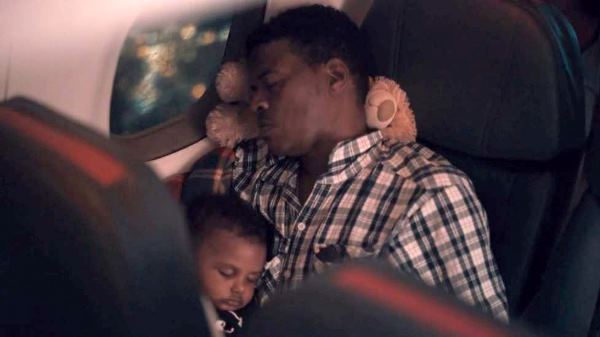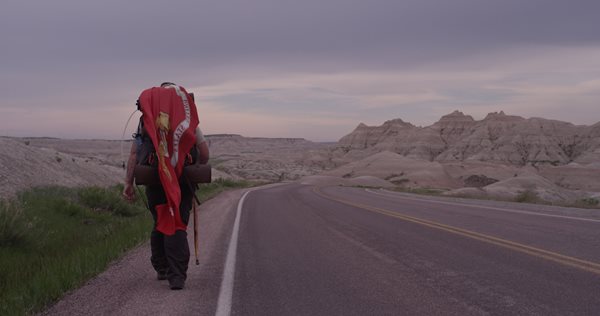
Each year, the Slamdance Film Festival screens a number of daring, independent documentaries by mostly first-time filmmakers, and its most recent slate was no exception. However, three entries this time around cut especially close to the bone, as they center on crises afflicting Americans throughout the country. They include opioid abuse; soldiers returning from fighting overseas with untreated psychological illnesses; and the decline of the shopping mall, which not long ago was an engine of economic growth.
All three films, which as of this writing are still looking for distributors, are definitely worth seeing as they make their way onto the film festival circuit during the coming year.
The harrowing and ever-relevant Higher Love is set amid the dilapidated streets of Camden, New Jersey, and centers on mostly working-class African Americans. Impending father Daryl spends his nights in search of Nani, the pregnant mother of his unborn child who sells her body to pay for her next fix, despite the risks to the baby. We also get acquainted with the well-weathered Iman, Nani’s drug buddy, who believes he can turn his life around.
Director Hasan Oswald follows his subjects across several years, during which they repeatedly try to crawl out of the abyss, only to backslide into it. Observing without ever passing judgment, he nevertheless makes it clear that in this underprivileged environment, it’s far too easy to choose getting high over facing the challenges of everyday life. For Nani, the stresses of motherhood make overcoming her addiction seemingly impossible, while for Iman, his fellow abusers represent the closest he has to a community that cares about him, even if they never dissuade him from his drug use. The film also points out just how powerful addiction can be as Nani and Iman enter a trance-like state in which nothing else registers.
Oswald’s unflinching approach is both his film’s greatest strength as well as what can make it difficult viewing at times. Along with watching Nani and others casually inject poison, we witness the collateral damage from their abuse, which has an expanding effect: Daryl becomes increasingly bitter and angry at Nani, and he takes it out on her and everyone around him. It all culminates in an ending that honestly acknowledges how big a problem drug addiction is and how tragically love by itself may not be enough to conquer it.

The inspiring Bastards’ Road trudges through some pretty grim territory to reach an upbeat conclusion. An ex-Marine, Jon Hancock, a combat veteran who served during the Iraq War, walks 6,000 thousand miles from one end of America to the other, dropping in on former brothers-in-arms as well as grieving military families along the way. His journey is also about reconnecting with society in general, which he drifted away from as a result of post-traumatic stress disorder stemming from what he saw and did during wartime.
Hancock’s not alone in his anguish either. At nearly every stop, his conversations with those who were also in his unit inevitably turn to how distressed they’ve all been since Iraq. The problem has far less to do with these men, the film argues, than the toxic “warrior’s code” they’d been indoctrinated into. As Marines, they were taught that talking about one’s emotions is a weakness and must therefore be avoided, even if the end result is isolation, substance abuse, or worse.
On an aesthetic level, director Brian Morrison’s approach is not particularly innovative, but having the subjects discuss directly to the camera the tragedies they are still struggling to process, how they erred in refusing to resolve those traumas, and the problems this caused in their lives is undeniably stirring. The documentary also benefits from the central presence of Hancock, who seems like a big teddy bear of a man at first, but then we learn about the more troubling episodes in his past, some of which are genuinely unexpected. He refuses to deny his own culpability, and his quest for redemption provides an emotional hook that elevates the film.

The fascinating, surprisingly poignant Jasper Mall chronicles a year in the life of an Alabama shopping plaza, which is already in steep decline when the documentary picks up. It’s a ghost town with a largely deserted atrium and dwindling customer base, although a few people still work and spend their days here. In observing the dwellers of what amounts to a sinking ship, directors Bradford Thomasson and Brett Whitcomb capture a glimpse of humanity living through uncertain times.
Their subjects include a cross section of mall workers, store owners and their employees (observed performing their most menial tasks), and a few stray patrons. Due to the general lack of activity, as well as the filmmakers’ decision to eschew any title cards indicating the passage of time, it really seems as if these ordinary folks are stuck in limbo, and they invariably let the viewer in on how they feel about the changing circumstances around them. Some have begrudgingly made peace with being forced into an early retirement, others are slightly bitter, and still others refuse to plan their next move until the very last storefront is shuttered.
The film occasionally allows us to see the extraordinary in these seemingly everyday people. While the camera is a detached observer throughout, there are moments where the filmmakers seem to be hinting at something innocent and old-fashioned, such as a young family enjoying a carnival in the mall’s outdoor parking lot, which the surrounding community stands to lose. Ultimately, Jasper Mall reminds us that there is more to a shopping center dying than just large buildings emptying out.
















Leave A Comment